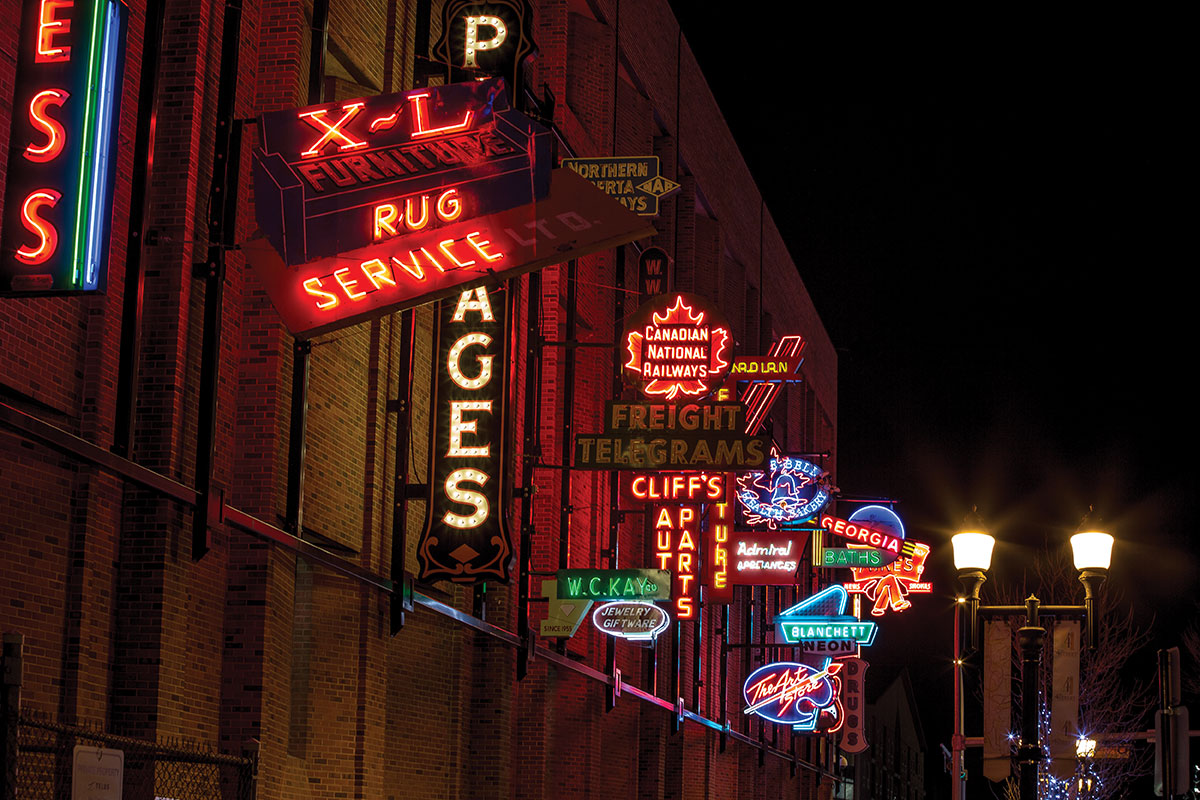
In 2002, David Holdsworth was walking down Ninety-seventh Street, in Edmonton, when he noticed a work crew removing the neon sign that continued to mark the location of Canadian Furniture, four years after the store shuttered. Holdsworth, a senior planner with the City of Edmonton, asked where the sign was going. When he heard it was headed for the trash, Holdsworth had it delivered to a municipal yard and contacted the building’s owner for permission to obtain it for the city. Holdsworth saved several more examples of Edmonton’s gas-filled commercial history over the next few years, until the collection grew large enough that the city was forced to figure out what to do with it. “Edmonton, like pretty much every other Canadian city, is actively seeking to revitalize its downtown, draw people in, and create unique spaces,” said David Johnston, Edmonton’s principal heritage planner. “So I think there was an appetite to say, We are accumulating some artifacts though this process, it would be a neat installation somewhere, so let’s see what we can do in terms of finding a location for it.”
Telus agreed to let the city install a framing system onto the 104th Street side of its central wire centre—a three-storey building in no danger of being torn down or redeveloped. The city also forged a partnership with the Alberta Sign Association, whose staff agreed to volunteer their time recovering, refurbishing, and remounting the signs. The Neon Sign Museum—which, officially, is designated an art installation—was switched on for the first time in 2014, and originally featured eight signs. Ten more have been mounted since then, and, in 2016, a second frame was added. “The original frame was looking only at double-sided signs that cantilever out from the wall,” said Johnston. “As time went on, we started getting offered a handful of one-sided signs. We approached the property owner of Mercer Warehouse across the street and asked if he’d be interested in being a satellite location.”
Every piece in the museum—which includes signs for national organizations like Canadian National Railways and local business such as X-L Furniture Rug Service and the Georgia Baths—once hung somewhere in the city or the surrounding area. One sign, for the jewellery store W. C. Kay, was left unfinished by its sign maker in 1960, and was lit for the first time when it was added to the museum, in 2016.
“The original wall has capacity for roughly thirty signs, so we still have a bit of space on the main wall,” Johnston said. “We have some signs for the other frame that will put that wall at capacity. We have a fairly immediate need to find another satellite location in the vicinity, so we’re starting to identify potential properties and reaching out to those property owners to gauge their interest. It’s a good problem to have, but we’re a bit of a victim of our own success.”